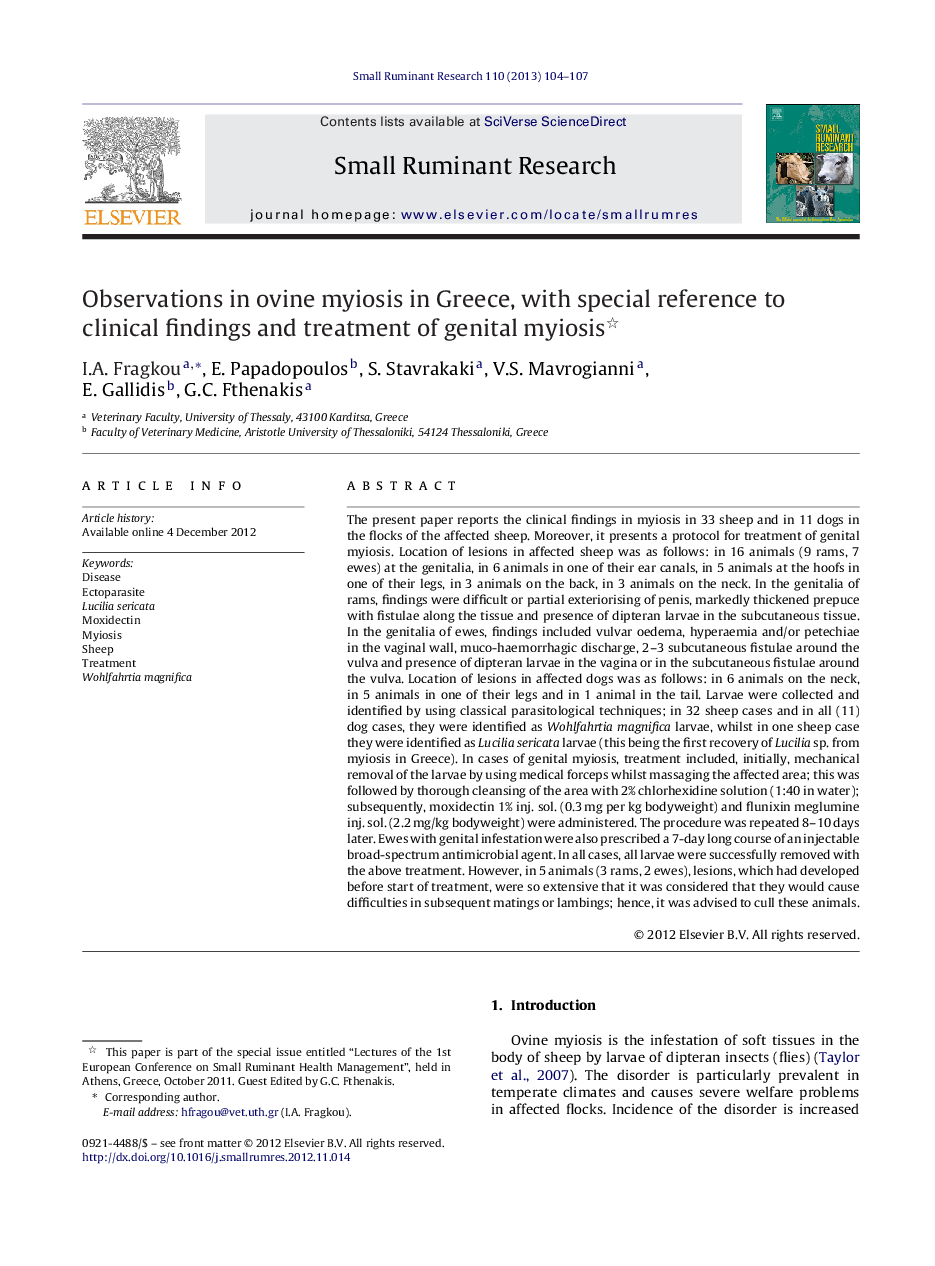| کد مقاله | کد نشریه | سال انتشار | مقاله انگلیسی | نسخه تمام متن |
|---|---|---|---|---|
| 2457125 | 1554382 | 2013 | 4 صفحه PDF | دانلود رایگان |

The present paper reports the clinical findings in myiosis in 33 sheep and in 11 dogs in the flocks of the affected sheep. Moreover, it presents a protocol for treatment of genital myiosis. Location of lesions in affected sheep was as follows: in 16 animals (9 rams, 7 ewes) at the genitalia, in 6 animals in one of their ear canals, in 5 animals at the hoofs in one of their legs, in 3 animals on the back, in 3 animals on the neck. In the genitalia of rams, findings were difficult or partial exteriorising of penis, markedly thickened prepuce with fistulae along the tissue and presence of dipteran larvae in the subcutaneous tissue. In the genitalia of ewes, findings included vulvar oedema, hyperaemia and/or petechiae in the vaginal wall, muco-haemorrhagic discharge, 2–3 subcutaneous fistulae around the vulva and presence of dipteran larvae in the vagina or in the subcutaneous fistulae around the vulva. Location of lesions in affected dogs was as follows: in 6 animals on the neck, in 5 animals in one of their legs and in 1 animal in the tail. Larvae were collected and identified by using classical parasitological techniques; in 32 sheep cases and in all (11) dog cases, they were identified as Wohlfahrtia magnifica larvae, whilst in one sheep case they were identified as Lucilia sericata larvae (this being the first recovery of Lucilia sp. from myiosis in Greece). In cases of genital myiosis, treatment included, initially, mechanical removal of the larvae by using medical forceps whilst massaging the affected area; this was followed by thorough cleansing of the area with 2% chlorhexidine solution (1:40 in water); subsequently, moxidectin 1% inj. sol. (0.3 mg per kg bodyweight) and flunixin meglumine inj. sol. (2.2 mg/kg bodyweight) were administered. The procedure was repeated 8–10 days later. Ewes with genital infestation were also prescribed a 7-day long course of an injectable broad-spectrum antimicrobial agent. In all cases, all larvae were successfully removed with the above treatment. However, in 5 animals (3 rams, 2 ewes), lesions, which had developed before start of treatment, were so extensive that it was considered that they would cause difficulties in subsequent matings or lambings; hence, it was advised to cull these animals.
Journal: Small Ruminant Research - Volume 110, Issues 2–3, March 2013, Pages 104–107